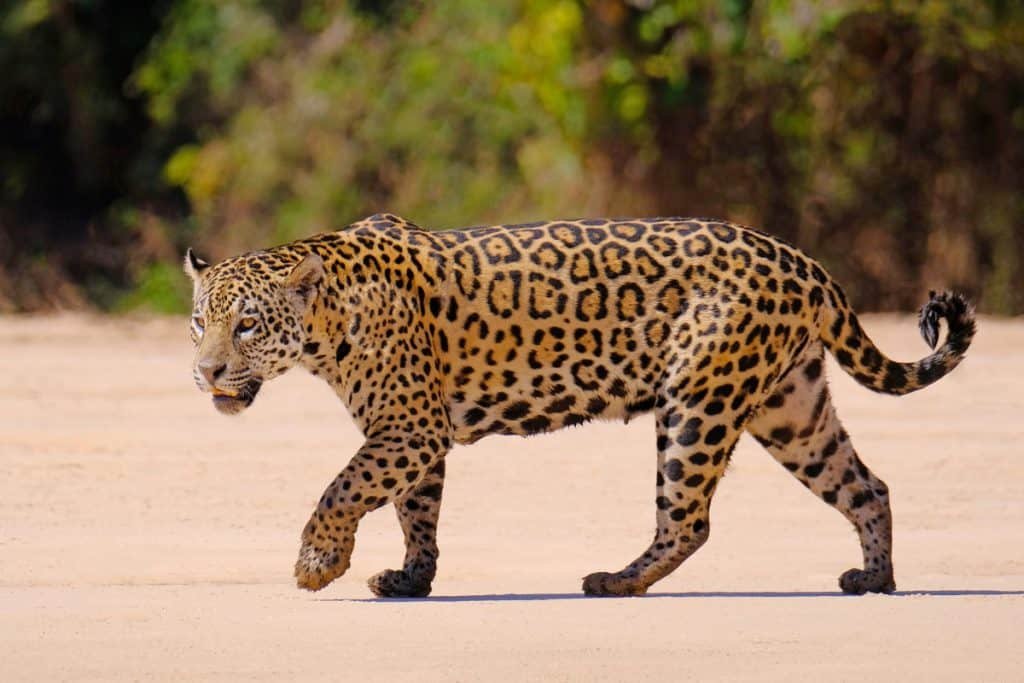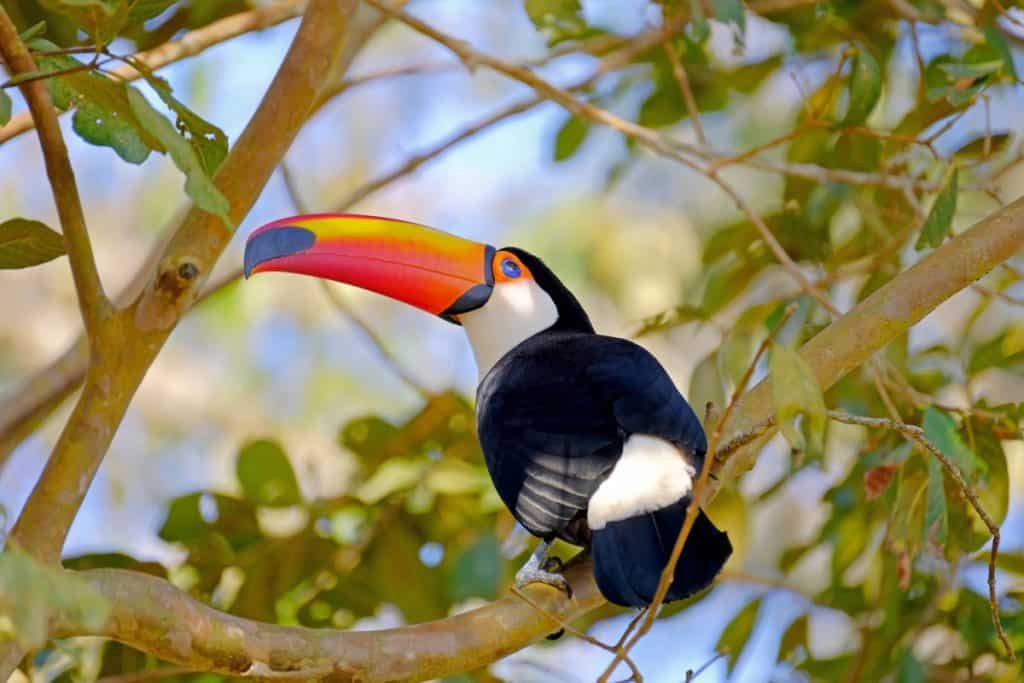While browsing on the internet a noticed most articles have the incorrect animal as being the symbol of Brazil. That led me to do a bit of research to try and understand why this was the case and I came across the official legislation that settles the matter:
The Brazilian National Animal is actually the Rufous-Bellied Thrush (Sabiá-laranjeira in Portuguese). The Rufous-Bellied Thrush was officialized as the national animal on an Executive Decree of October 3rd, 2002 by the then Brazilian President, Fernando Henrique Cardoso.
However, due to the enormous biodiversity of Brazil, several other animals, such as the jaguar, the toucan, and the macaw have a special place in representing the country, each one for a different reason.
The animal in the featured picture is the capybara, and although pretty common in Brazil, this gentle giant is not our official animal either.
Rufous-Bellied Thrush: The Official Representative
The Rufous-Bellied Thrush (Turdus rufiventris or sabiá–laranjeira in Portuguese) has a singing that resembles a flute. Many characterize it as joyful and with a hint of saudade (a Brazilian word that denotes nostalgia), which represents well the Brazilian spirit.
The songbird has a rusty coloration on the belly and can be found throughout almost the entire Brazilian territory, from the northeast state of Maranhão to the most southern states of Brazil, Rio Grande do Sul.
The bird was chosen due to having already been pictured in several Brazilian poems, songs, and books, being well known across the country. A famous poem called Canção do Exílio from 1843 by Gonçalves Dias says:
Minha terra tem palmeiras (My land has palm trees) Onde canta o sabiá (Where the thrush sings)
Unfortunately, due to its beautiful singing, it is usually captured by people to be sold or kept as caged birds and for bird singing contests, which are popular in some parts of Brazil. Despite this practice, it is not considered an endangered species by IUCN.
The Rufous-Bellied Thrush is a small bird (around 65 g or 2.3 oz and 25 cm or 10 inches), it feeds from fruits and arthropods (like spiders, butterflies, and scorpions). Both males and females have approximately the same size but the female is usually slightly heavier as it is plumper.
You can hear below the beautiful singing of this bird:
The thrushes can be found easily in most of Brazil, including cities like Rio and São Paulo, so spotting them should be simple for the bird-loving travelers. Their singing is also heard during the late night and early morning when the city is quiet.
Jaguar: The Pantanal King
The Jaguar (Panthera onca or onça-pintada in Portuguese) is perhaps the one that comes to mind the most when thinking about Brazilian animals. The exotic big cat has beautiful fur, with rose-like patterns called rosettes. It is similar to the leopards found in most of America but it is usually larger and sturdier than those.

When doing my research, I found several websites and also some people on forums claiming the jaguar to be the official animal but I have found no evidence of any federal or regional law officializing such information.
However, it is easy to understand why. It is likely to be one of the most beautiful animals from the Brazilian fauna, making it popular with tourists from Brazil and from other countries as well.
The Jaguar can be found from Central America, through the depths of the Amazonian forest and the Pantanal, down to Northern Argentina.
Jaguar derives from the indigenous language Tupi and means “beast of prey”. They are now listed as Near Threat due to poachers huntings and farmers killing the animals to avoid attacks on their cattle.
In Brazil the hunting and killing of these animals is prohibited, although it is still common.
The best way to see Jaguars is to visit the Pantanal, as the jaguars prefer to make their homes where water is abundant and the Pantanal is known to be the wetland region of Brazil.
As these animals are the Brazilian celebrity animals, finding a tour should be an easy task.
Toucan: The Tropical Exuberance In Bird-Shape
If you were to ask me a while ago (before I researched this), I would have said the toucan (Ramphastos toco, more specifically the Toco Toucan or tucano in Portuguese) to be the national animal.
This tropical, distinctive bird seems like the appropriate choice for representing Brazil.
I remember when I was a kid and my grandfather had a house surrounded by the Atlantic Forest, I was able to see one very close to me. He just landed on one of the trees nearby and obviously flew away once I got closer.
That was my only encounter with a wild toucan in my life. I guess that stuck to my head and if I think what animal would represent Brazil, I would have said the toucan for sure.
The toucans have a peculiarly long, colorful, and large beak, it is mostly found on the edges of the tropical forests of Brazil as it prefers open spaces.

It is not usual in Brazil to have them as pets, although they seem to be popular outside of the country. I was pleasantly surprised to find out that they are also not an endangered species, even though they might be targeted for illegal trading.
There are 42 species of toucans in Central and South America, but if you want to see the Toco Toucan, the Pantanal is your best bet, since it is full of open spaces, the preferred environment of these gorgeous birds.
This species is the only one to not live in forests, hence being more easily spotted than the other ones.
Macaw: The Multi-Colored Birds
A very strong contender to be the Brazilian National Icon as well. Depending on the species, the macaws (Ara macao or arara in Portuguese) can be red, blue, green, etc. As these are beautiful birds with vibrant colors, they are highly targeted for illegal bird trading.
They also live mostly in the forests, so both deforestation and illegal trading are contributing to the rapid decrease of numbers of these birds, with a few species being considered extinct in the wild now.
The movie Rio (2011, Carlos Saldanha) draw attention to the macaws, in special to the Spinx’s Macaw (ararinha-azul in Portuguese) and the issues of the illegal trading.
This macaw is one of the species now considered extinct in the wild, however, a conservation plan to repatriate, reproduce, and free the remaining birds in the wild has been signed at the end of 2019.
Other iconic macaws usually associated with Brazil are the Red-and-Green Macaw, Hyacinth Macaw, and the Military Macaw. The famous Disney character, Jose Carioca (Zé Carioca in Portuguese) is a green parrot, and although not technically a macaw, it is from the same family.

If you are looking to see macaws in Brazil, the Pantanal is your best bet again. Near Bonito (the town name means Beautiful in Portuguese, you can guess why) there is a popular attraction called the Macaw Sinkhole, where several macaws nest and live.
However, the macaws can also be spotted in Rio de Janeiro (going up the Sugar Loaf hiking trail), Iguazu Falls (Bird Park), and in the Amazon forest.
Golden Parakeet: The Brazilian Flag Colors
I have always heard about the golden parakeet, also called golden conure, (Guaruba guarouba or ararajuba in Portuguese) as being one of the Brazilian symbols. I don’t think I have ever seen one live, but by looking at pictures, you can easily tell why they are also on the list.

Their bright yellow and green feathers display the main colors of the Brazilian flag, making it a probable option for being a national emblem.
It leaves in a smaller, drier part of the Amazon rainforest but due to deforestation and flooding have been rapidly losing its already small territory. Due to this, they are currently considered as a Vulnerable species by IUCN.
Being a social species, they can usually be seen in group and are also migratory for the breeding season. Curiously, their reproductive system is pretty unique amongst the other parrots species.
The chicks are usually raised and fed by a group of helpers instead of only the two parents.
If you are interested in seeing the golden parakeets in the wild, going to the Amazonian forest, in special in the states of Maranhão, Pará and Amazonas are where you will want to go.
In Belém, capital of the state of Pará, there is a conservation park being actively maintained and steps are being taken to increase the population of these beautiful birds.
There are many other animals I could bring here as being representative of Brazil, such as the maned wolf, the giant anteater, capybaras, and the golden lion tamarin. These are all typical animals and each has a strong relation to Brazil in its own way.
However, as you could see throughout this article, most of them are being threatened of extinction due mostly to deforestation and illegal tradings. I would encourage you to avoid purchasing them as pets, but going to see them in their natural habitat instead. That way, all fauna and flora can be appreciated by generations to come.
If you are interested in going to the Pantanal, you should check our guide about Nobres, MT in Brazil, similar to Bonito, MS with crystal clear rivers, lush forests and amazing wildlife.
